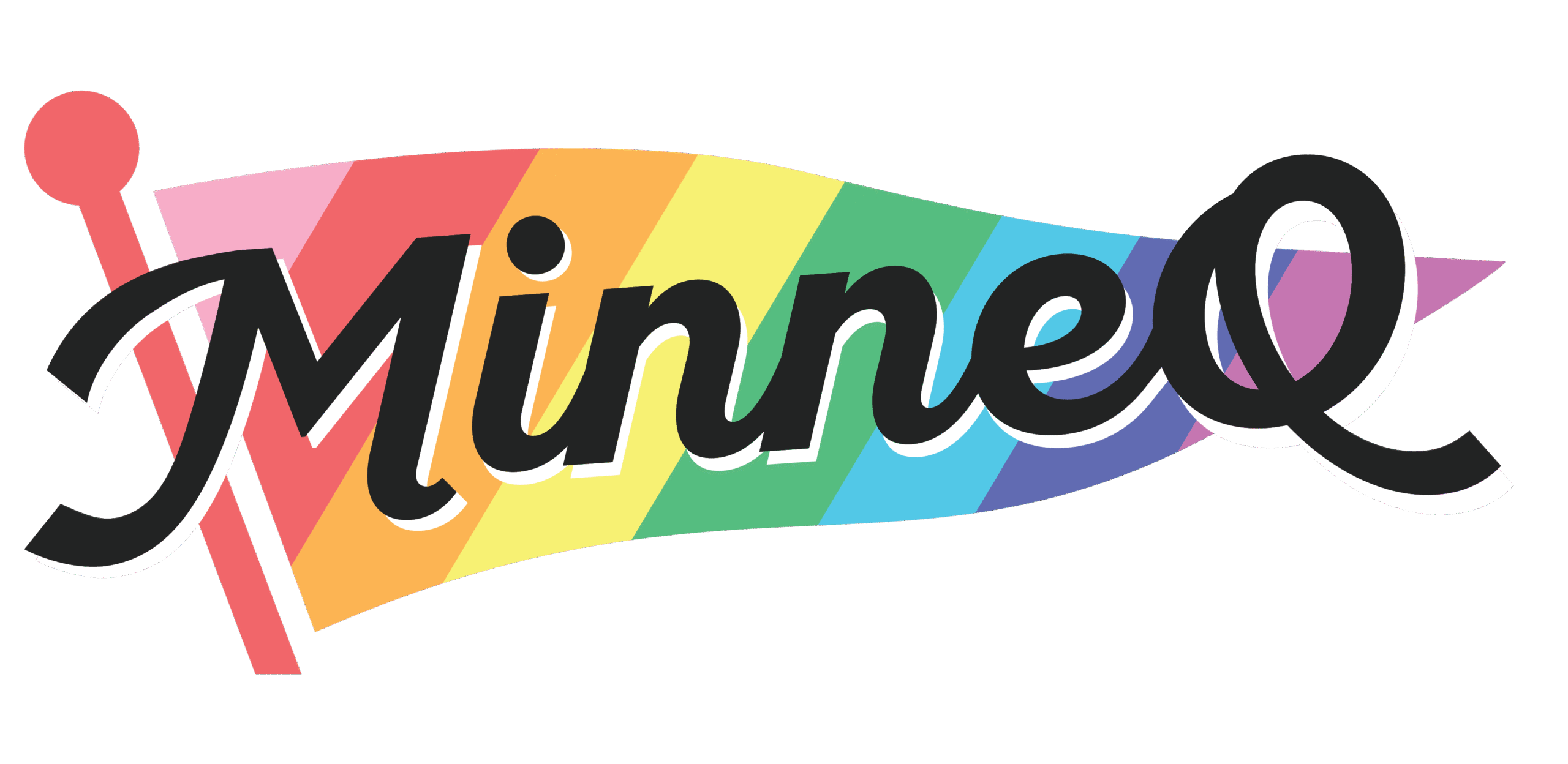Because of the nature of the Queer community, much of our language has developed in online spaces and is not necessarily “standardized”. We have created this page to be a resource of definitions as we use them within MinneQ. If you think of something we are missing that belongs on this page, submit a ticket on Discord to let us know!
Acronyms and History
Gender, Sexuality, and Romantic Minorities (GSRM).
There are multiple different versions of the “alphabet soup” that have appeared over the years to describe the various facets of the queer community.
- LGBT became popularized in the mid 1980s, with the letters meaning, Lesbian, Gay, Bisexual, Transgender.
- LGBTQ followed, but there was debate if the Q stood for “Questioning” or “Queer”. Sometimes two Qs were added to symbolize both groups.
- LGBTQIA was the next to follow, including Intersex and another unclear letter; was the A for “Allies” or “Asexual”? Similar to Q, sometimes two As were added, so both groups were represented.
- P, for pansexual, has sometimes been added to be more inclusive.
- 2S refers to Two-Spirit. It was typically placed in front to honor Indigenous individuals who encompass both masculine and feminine identities.
- All of the above combinations would leave us with 2SLGBTQQIPAA. As the additions kept growing, people looked for ways to shorten the name while retaining the inclusiveness.
- Trans* was popularized in the early 2010s to be all encompassing of transgender and gender non-conforming identities. Many criticized it for the intonation of “exclusions apply”.
- The Plus (+) was added to signify the vast range of identities and experiences that fall outside the traditionally listed categories. It acknowledges that there are countless ways to express gender and sexuality, and that the list is not exhaustive.
- TQ+ is sometimes used to describe individuals under the gender non-conforming umbrella. The segregation from the rest of “LGB” is intentional to call attention to the unique difficulties (socially, access to healthcare, etc) that come with gender non-conformity.
- Queer was once a slur derogatorily used towards LGBT individuals to mean “strange and unusual”. It has been reclaimed by the community to be an all-inclusive term for anyone who does not fall into cisgender and/or heterosexual identities.
- GSRM has gained some traction in recent years to describe everything that falls outside of heteronormativity. Some feel this term has an academic and clinical connotation.
At MinneQ, we use both Queer and LGBTQ+, depending on the context. We feel these are the best options for comprehensiveness, simplicity of use, and are generally well-known.
Third-space/third-place
Third-space is a sociological term to refer to a social space that is not home (first-space) or work (second-space). Third spaces are generally somewhere you can exist without the express intent of shopping/spending money.
Throughout history, religious institutions have served as third-spaces, as has “the local bar”. Throughout the last two decades, and especially during the COVID-19 pandemic, third-spaces have moved online (i.e. online gaming guilds, YouTube communities, and old-school forums).
At MinneQ, we feel queer-centric third-spaces are lacking, and especially those that are explicitly sober. Part of our mission at MinneQ is to provide a Queer, sober third-space that exists both in-person and online.
Gender Dysphoria
Gender dysphoria is distress, unhappiness, and anxiety related to the an incongruence between a persons gender identity and their body and/or assigned sex. Gender dysphoria can also occur when someone is treated as the wrong gender socially, such as when people use the wrong pronouns.
Gender Euphoria
Gender euphoria is the joy and happiness individuals feel when they feel an alignment between their gender identity and body, or how they are treated socially in the world.
Some gender euphoria can be found through combating the biggest sources of dysphoria. For example, a trans man who struggles with his breasts might seek top surgery. Gender euphoria can also be found in simple day-to-day, such as two trans women being called “ladies”.
Kink/Sex Positive
MinneQ is a kink and sex positive space. Sexual activity is a normal and healthy part of adulthood, and we want to be part of encouraging that normalcy–not insist it must be hidden. We are not a group for hookups, cruising, or sex parties.
Kink and sex positive at MinneQ means that we allow conversations about sex and encourage people to ask for advice and recommendations. Some (but not all) of our events may have themes on the “spicy” side, or encourage an expression of sexuality.
